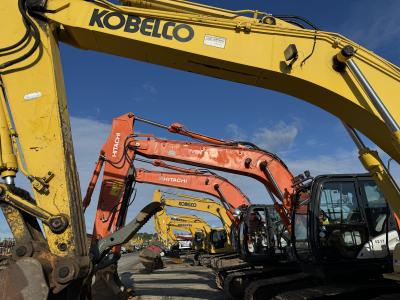In managing the prospects of risk on project sites nationwide, both contractors and insurers alike are optimistic about the potential for modern technology to help mitigate any impending threats to safety in the work environment.
According to a recent Dodge Data & Analytics study (conducted in partnership with IRMI Insights and Triax Technologies Inc.), challenges do remain, however, within the realm of technological advancements and assessing risk before contractors can take full advantage of its untapped potential.
Dodge's report, aptly titled, "Using Technology to Improve Risk Management in Construction," was based on the findings of two studies that polled contractors and insurers for answers. The quantitative portion examined how contractors manage risk and their assessment of new and emerging tech. The qualitative piece asked insurers to weigh in on the current state of the construction industry in regard to using data in minimizing risk, as well as the potential for current and developing technologies to improve those capabilities.
Throughout the entirety of a project's life, contractors manage the risks associated with a given job through a variety of means. Some of these activities are considered to be more difficult tasks than others, as the study revealed.
To respondents, the most challenging activity is managing the ongoing risks that may plague a work site over the course of a project. Primarily faced during construction, two thirds of the contractors surveyed rated this action at a medium difficulty level or higher. Additionally, identifying risk in pre-construction is another challenge reported by contractors, which is to be expected considering the unpredictable nature of workplace hazards.
So how do contractors gather and examine data regarding risk? Fewer than half of those polled believe there are clear ways to measure a project's risk performance. While uncertainty is often associated with risk, job hazard analyses (JHA), real-time site monitoring and safety incident documentation are ways that construction companies can quantify risk using technology to provide a more accurate picture of what could or did go wrong on a given project. In predicting the patterns of risk, it is helpful for companies to have an electronic log of all incidents to better recognize harmful trends.
The survey illustrates that there is a clear divide in thinking for respondents between those who digitally compile project safety and risk data in-house and those who do not at all, but wish they had.
"Contractors generally recognize the value of these activities, which suggests that resource and expertise constraints are key issues preventing wider use," Dodge's report stated. Of the polling sample, more than three quarters (76 percent) of large companies collect safety and risk data digitally, compared with 53 percent of mid-size corporations and 38 percent of small outfits. A very small percentage of contractors use third-party vendors to collect and analyze their own risk-related data.
The accessibility of new tech figures to put more data in the hands of contractors than ever before, however, this information on its own serves little purpose. Because this is such a new area for businesses to invest time and resources, it is rare for contractors to have the skills needed to effectively analyze risk data. According to the study, being able to maximize the benefits of gathering this information requires the data to be structured from the start, and that structure should be determined by specific analytics.
An overwhelming majority (67 percent) of respondents reported that their company does not budget any money for risk data analytics or consulting. Even among those contractors employed by large companies, 34 percent said they do not spend on this important practice. Despite all of the capital and hours of research invested in innovation, buy-in among contractors remains a significant hurdle. Forty-four percent of respondents admitted that their company absorbs costs associated with new project risk mitigation technology into its regular budget in expectation of gains in the long term. More than a third of all contractors reported that their company would pass on these costs altogether.
Technology and construction experts from 10 insurance brokerages and carriers were surveyed to identify what new tech is best suited to address and mitigate risk in the industry. The top item discussed was wearables — a broad category that includes products like sensors worn on work gear that can help detect falls or unsafe behavior, as well as biometric monitoring devices that can alert supervisors to employees working while impaired. Another valuable tool is visual auditing, which when paired with artificial intelligence (AI) can "detect trends and see deviations like safety violations and help flag areas most likely to have an issue."
Add this new tech to existing technologies used by contractors like telematics and progress tracking software, and companies will have a much stronger handle on risk than they do without it. According to the study, nearly all of the insurance participants made it clear that their goal is to help improve the industry for the better, and a few even suggested that a stated interest in considering these new technologies by contractors may even influence their decision about who and what projects to insure. In the interest of sustaining their business both by fostering a safe work environment and appeasing insurers, all contractors should seriously consider the value of technology as it pertains to analyzing risk.
To ensure validity and the best-possible answers, Dodge's sample of contractors all possessed the following requirements: Respondents had to be employed by a general contractor, construction management company, design-builder or specialty trade contractor that has conducted project work in the United States within the past five years; at least half of the company's work over that five-year span had to be related to general building; and respondents had to have significant involvement with risk evaluation/management or safety initiatives at their company. CEG
Today's top stories
















